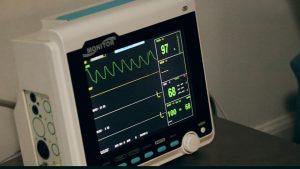
For some years now, the UK population has been ageing. This is due to several factors, including advances in healthcare and improvements in lifestyle including areas like nutritional status. According to the Office of National Statistics, in 2007 15.9% of the population was aged over 65 years, a proportion which had grown to 18% by 2017 and by 2027 the figure is projected to be 20.7%. Currently, the very old, who are aged 85 years or over, make up around 2.5% of the populace. If people are living longer, they have a greater chance of being involved in an accident that results in major trauma. This is usually defined as multiple serious injuries that could result in disability or death and is assessed using the Injury Severity Score, which assigns a value to injuries in different parts of the body. A total score of over 15 indicates major trauma.
Until recently, the profile of a typical trauma patient was male, young and the victim of a high energy transfer injury, such as a road traffic collision or act of violence. However, this is no longer the case and people aged over 60 currently account for approximately 50% of all trauma cases admitted to hospital, hence the name ‘silver trauma’. The increase in the average age of a trauma patient has increased from 36.1 years in 1990 to 53.8 years in 2013. The over-75s are the fastest-growing major trauma group and this increase is disproportionately high compared to demographic changes over the same period of time. Interestingly, although there is a perception that the elderly are more liable to have an accident in the winter, there is actually no marked seasonality in the occurrence of silver trauma. However, it is true that minor injuries are more likely to happen during the winter months. In younger patients, injury is more likely to occur outdoors but for the elderly an accident at home is the most common scenario.
The most common mechanism of injury in the elderly is a fall from a height of less than two metres, which is classed as a low energy mechanism. The majority of these accidents are not as serious and therefore clinicians tend to expect a single-site injury, such as a fractured femur. However, this type of accident may not necessarily result in just a broken bone; the effects can also be neurological or involve damage to the internal organs. In fact, in geriatric patients, traumatic brain injury is the most prevalent type of injury and the most common cause of death.
This mechanism classification, coupled with the expectation of a single site injury, may explain why only 17% of elderly patients are taken straight to a Major Trauma Centre after initial assessment, compared to 40% in the under-60s, even though the severity of injury does not differ across patient age groups. In fact, older people are at an increased risk of severe injuries even after relatively innocuous accidents. Furthermore, geriatric patients are more likely to present with co-existing medical conditions, such as respiratory and cardiac conditions (also termed comorbidities), all of which may have contributed to the accident and which may also mask any injuries. These need to be carefully assessed, as they are likely to have some influence on the eventual treatment plan and rehabilitation of the patient.

Along with higher levels of co-morbidity, elderly patients who suffer trauma will obviously be at higher risk of death (mortality) than younger patients, but this is often difficult to predict. A major study in the UK found that while there was an expected increase in mortality in patients with serious pre-existing disease, most deaths actually occurred in patients with no or minor disease, and co-morbidity had less effect on mortality than expected. There is also evidence that the mortality rate in patients who are injured at home is twice as high as that in patients injured outdoors. This may be because patients who are injured inside the home are frailer to begin with. Thus, frailty may be a better predictor of mortality than age alone. In any case, mortality may not be the best measure of outcome in patients who are nearing the end of their lives. Quality of life, length of stay in hospital, significant disability and the need for ongoing care may be better markers. Interestingly, older patients who do survive major trauma appear to have a similar outcome in terms of moderate or severe disability as younger age groups.
As the UK population continues to age, silver trauma will become more common. Once trauma has occurred, in order to achieve the best possible outcome, treatment should take a patient-centred, rather than injury-centred, approach. Due to the complex needs of older people, care of the geriatric trauma patient is likely to involve a wide range of medical and allied health professionals.
As the UK population continues to age, silver trauma will become more common. Once trauma has occurred, in order to achieve the best possible outcome, treatment should take a patient-centred, rather than injury-centred, approach. Due to the complex needs of older people, care of the geriatric trauma patient is likely to involve a wide range of medical and allied health professionals. From a medico legal perspective this group of patients suffering with severe injuries are at risk of under-triage, delayed diagnosis and subsequent sub-optimal care. The British Geriatric Association updated their Standards of Practice in June 2019, this details the pathway to be followed when treating and caring for the older or frail orthopaedic trauma patient admitted into hospital having sustained a fragility fracture or those sustaining major trauma who have a Clinical Frailty Scale (CFS) of 5 or more. Many patients in this group will not be aware of the care pathway they should receive until something goes wrong. Mr Vasireddy is well placed to assist you in assessing the veracity of a potential claim by analysing the standard of care the patient received from the outset.
About Mr Ash Vasireddy
Mr Vasireddy is a full-time fellowship-trained Orthopaedic Trauma Surgeon at King’s College Hospital and expert witness. He specialises in the management of complex open/closed pelvic, acetabular, upper limb and lower limb fractures and amputations. He is also one of a small group of surgeons, and the only contemporary Orthopaedic Surgeon, in the UK who works as a HEMS (Air Ambulance) Pre-hospital Care Doctor. View his full CV.
Mr Vasireddy can be instructed through Medicolegal Partners Ltd on 020 7118 0650 or info@medicolegal-partners.com.
Further Reading:
https://www.tarn.ac.uk/Content.aspx?c=3793
https://www.bgs.org.uk/resources/boast-the-care-of-the-older-or-frail-orthopaedic-trauma-patient
